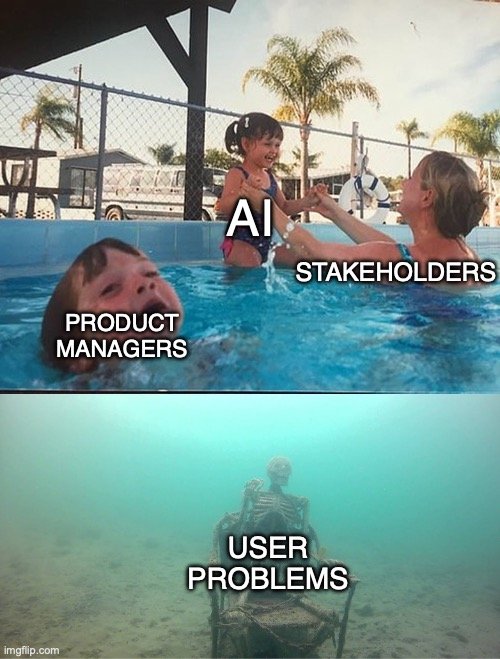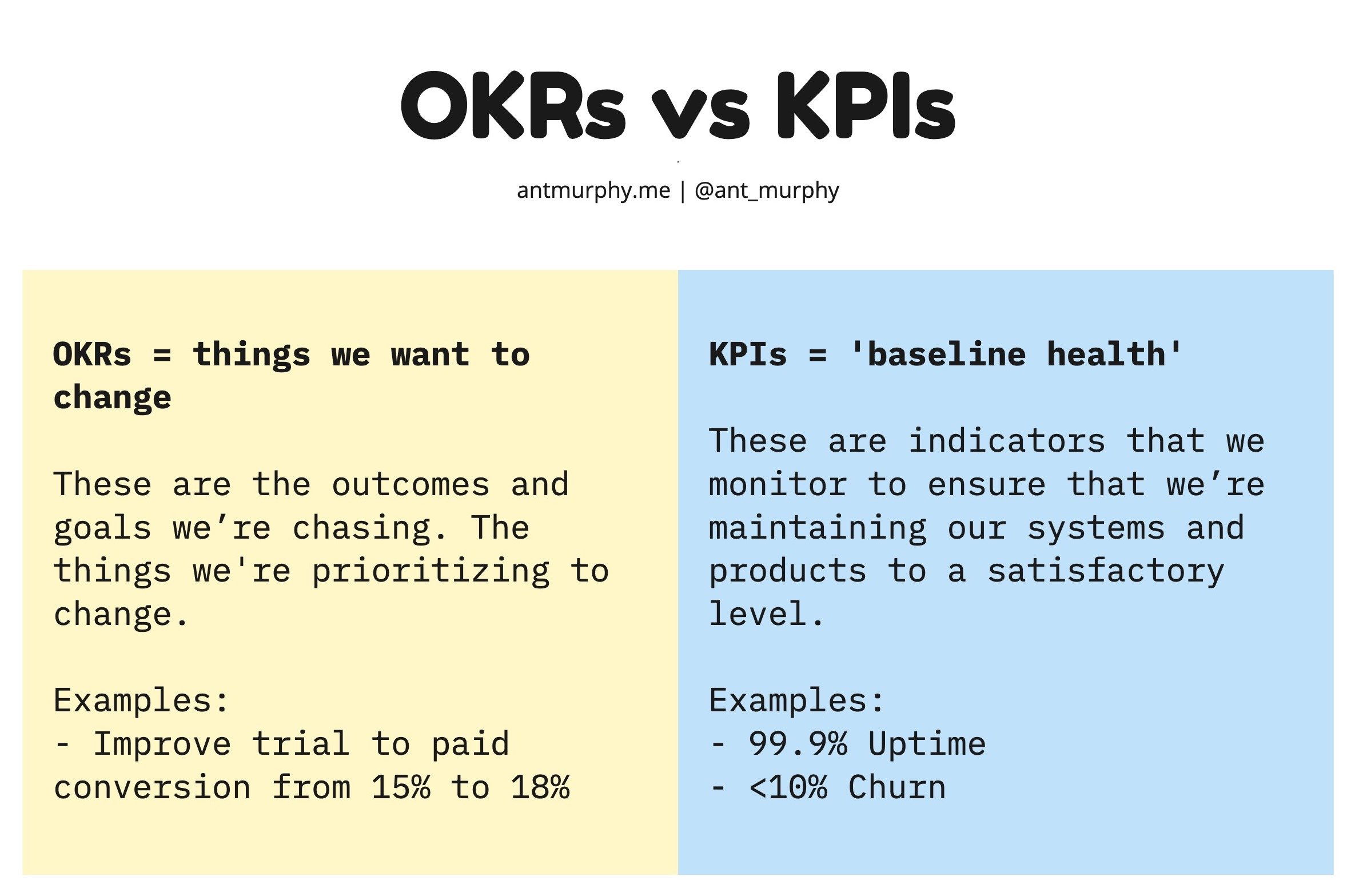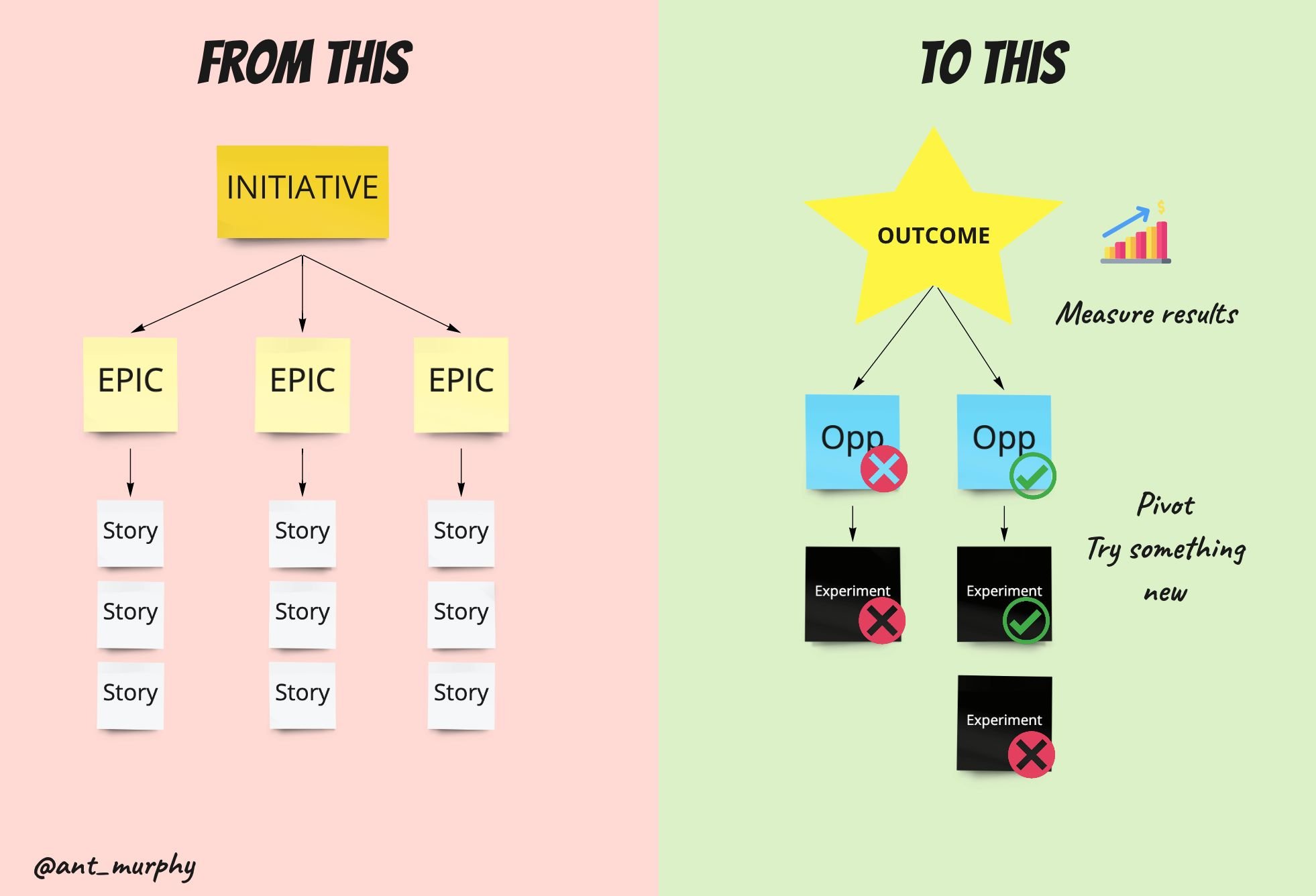Effective Ways to Build Your Product Sense
Hey I’m Ant and welcome to my newsletter where you will find actionable posts on all things product, business and leadership.
You might have missed these recent posts:
- OKRS ≠ Strategy
- Building Effecive Product Roadmaps
- Asking Better User Interview Questions
My day job is helping companies shift to a Product Operating Model.
My evening job is helping product people master their craft with Product Pathways.
If video is more your thing, check my Youtube channel out!
“Deciding to invest in your Product sense is among the highest ROI decisions you’ll make in your career.” - Shreyas Doshi
I want to do two things in this post:
Give you actionable ways to build product sense.
Explain what the hell Product Sparring is and how product leaders can use it to build product sense in their teams.
Building Product Sense
Let’s first start with what the hell product sense is.
Personally, I’m not the biggest fan of the term, and like Marty Cagan, I’ve only found myself using it in the last year or so - perhaps it’s a recent trend…dunno.
But since it’s gaining popularity, companies are devoting interview rounds to it and I’ve been getting more questions about how to build it I thought I’d share my thoughts and offer links to some other great content on the topic.
In the last couple of years “Product Sense” Interviews have gained popularitySo, let’s define it so we’re all on the same page.
I liked Lenny’s framing that “Great product sense = generally being right about which product changes will have the intended impact.”
I think about product sense in a very similar way.
It’s about building the intuition to make smart product decisions.
That might feel fluffy or unattainable - something you are either born with or not - but it is a learned skill.
To make it more tangible, you can think of it as understanding things like:
Human behavior (i.e. behavioral economics, biases, psychology, etc)
Business acumen (i.e. business models, financials, operations, industry trends, etc)
Product (i.e. flywheels, value propositions, product-led growth, activation, retention, etc)
Users (i.e. current users’ behaviors, ideal customer profile, user journeys, etc)
Technology (i.e. technology trends, tech limitations, etc)
These are all learnable.
To avoid confusion, Marty Cagan frames product sense as really just deep product knowledge.
“I argue that strong product sense is better described as deep product knowledge, and is the result of truly immersing yourself into a specific product space.” - Marty Cagan
This is where curiosity becomes such a high-value skill for product people.
Building product sense requires reps.
So whilst you’ll naturally build up your product sense over time, you can be intentional about it.
When I’m told statement like “the only way to build it is through years in the job” I challenge them on whether they believe they could increase how much time they:
spend with their users.
have feedback cycles on experiments and things that they’ve shipped.
learn a new concept and apply it.
spend reflecting and learning from past experiences.
Imagine a Product Manager who spends with their users once a month vs someone who does it every week.
“everyone I know that has clearly demonstrated this strong product sense has likewise put in the effort – even if they don’t realize it was that effort that’s responsible for their strong product sense.” - Marty Cagan
Another great way to develop your product sense are doing Product Teardowns and sparring sessions.
Product Teardowns
Product teardowns are a great activity for building your product sense.
You’ve probably heard the term before.
The idea is to take a product - for example, Youtube - and break it down.
How does it work?
Who is the ideal customer?
What’s good vs bad about the user experience?
How do they make their money?
How do they fuel their growth?
What would you change? and why?
Why are certain features the way they are?
…etc.
Here’s an example of a product teardown I did for Milkrun when they collapsed at the start of 2023 👇
You can find a bunch of great teardowns - like these:
But I encourage you to do your own. After all, that’s the point!
Product Sparring
Product sparring, sometimes referred to as “critiques” or “reviews”, are sessions where Product Managers present to the rest of their team to receive feedback and coaching.
Sparring sessions have been a long-standing practice within the design discipline, commonly called Design Critiques.
I was first introduced to design critiques back in 2016. The business unit I was working with had transitioned to the product model, and no surprise, practices like design critiques were common practice.
Every week the designers across the business unit would get together and do design critiques of each other’s work.
The Head of Engineering even caught onto the practice and implemented something similar for the engineering org.
Every week, one of the conference rooms would be packed (standing room only) with engineers, and they would do these large-scale code reviews.
Engineers would present new functionality, refactoring choices, etc, to a cast of nearly 50+ engineers. People would ask questions, give feedback, and coach each other - it was awesome!
Since then, I’m yet to see something like this at another organization (if you do or know of something similar I’d love to hear about it!)
And eventually, we had one going for product, too.
Fast forward to today, and I’ve seen the same practice work effectively at a dozen different organizations.
Product sparring is a great way to uplift the capability of your product team.
You can run them in different ways, from more collaborative jams to silent feedback.
However, a typical sparring session would look something like this.
Nominate who wants to “spar”. Typically this is done ahead of time, leading up to the session (pro tip set up a weekly reminder in the teams ’s slack channel to prompt volunteers for sparring). Product Leaders remember to create a safe space and actively coach their people to be comfortable with seeking out early feedback.
Presentation. The first part of the meeting is usually 5-10 minutes for the Product Manager to give context and present their work for sparring. This could be their updated Product Roadmap, product discovery plan, strategy document, PRD, etc.
Peer feedback. After the presentation, the product team took turns to give their feedback - what they liked, what was good, not so good, questions, etc.
Thanks & follow-ups. Finally, feedback is a gift, and I really like the practice of thanking everyone for their input and feedback. Remember that sparring isn’t about ‘roasting’ each other; it’s about strengthening the idea, raising the quality bar, and learning from each other to grow as product people. Follow up on any actions that came out of the review; sometimes, a peer might offer to share something with you or pair on something post the session.
I’m a big advocate for these kinds of sparring sessions. They’re a great way for your team to learn from each other, share knowledge, build product sense, and even raise the quality of the team’s work.
They may feel uncomfortable at first and a pre-requisite is psychological safety. But if the conditions are right for them, I couldn’t imagine being in a product team without regular sparring sessions.
Final words
As I finished writing this I remembered that SVPG had released a podcast episode on Product Sense, which I gave it a listen as I put in the final edits on this, and no surprise, it was a banger 🔥 so worth including - give it a listen 👇
I really liked their emphasis on the importance of traits such as empathy, curiosity, agency, and humility for building product sense (I already mentioned curiosity, but I love the addition of the other three).
Further reading on Product Sparring:
Product Manager Critiques: How to Raise the Bar of Your Product People by Chris Butler
Sparring Playbook by Atlassian
I’m also keen to hear if you do sparring sessions or similar today.
If so, what do they look like? How do you find them?
Let me know below!
Need help with scaling your product or business? I can help in 4 ways::
Level up your craft with self-paced deep dive courses, FREE events and videos on YouTube, templates, and guides on Product Pathways.
1:1 Coaching/Mentoring: I help product people and founders overcome challenges through 1-hour virtual sessions.
Consulting and Advisory: I help companies drive better results by building effective product practices.
Private Workshops and Training: I run practical workshops and training courses for product teams globally.












Your OKRs don’t live in a vacuum.
Yet this is exactly how I see many organizations treat their OKRs.
They jump on the bandwagon and create OKRs void of any context.
Here’s what I see all the time…